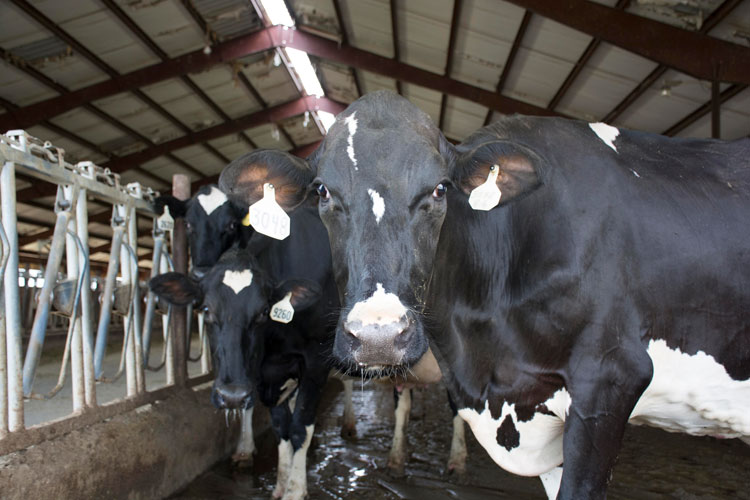
Body fat on dairy cows is measured on a 5-point body condition scale. The amount of body fat rises as you move up the scale. Determining the level of conditioning helps dairy farmers better manage individual cows or groups of cows.
Body condition scores are most useful when they are assigned accurately and consistently. New technology is available that can measure body condition scores using a camera, taking out some of the risk for human error. This option may become more widespread as time goes on, but for most farms right now, the traditional method of scoring using trained people will be the most readily available and cost effective.
The scoring system is fairly simple, but it takes some practice to get good at it. Penn State Extension’s Coleen Jones went through the basics of body condition scoring in the video, “Learn to score body condition.”
She explained that the main areas of evaluation when assigning body condition score (BCS) are the pelvic and loin areas. From the side, one is looking at the visibility of the hooks, pins, thurls, and short ribs. From the rear, a scorer is evaluating the hooks, pins, thurls, short ribs, and the sacral and tail head ligaments.
“The first decision you make will divide cows into two groups: those with a body condition score of 3 or less or those with a score greater than 3,” Jones said. To do that, look at the angle between the hooks and pins, using the thurl as a reference point. If that angle forms a “v”, the cow has a score of 3 or less. If the angle forms a “u”, the cow is greater than 3. This is an important decision, and may be the most difficult part of the process, Jones noted.
The scoring system moves up or down in .25 increments. Once you determine if a cow has a BCS greater than 3 or 3 or below, you can fine-tune the score by looking at fat covering of the hooks, pins, short ribs, and tail head region. Jones goes into more detail about that process in the video, which you can watch below.
The BCS goals are included in this table, which also came from Penn State Extension. Watch the video, and then practice body condition scoring in your own herd. If your cows are not falling within the desirable ranges below, take a closer look at your rations to see what adjustments may need to be made.
| Stage of Lactation | DIM | BCS | BCS | BCS |
| Calving | 0 | 3.50 | 3.25 | 3.75 |
| Early Lactation | 1 to 30 | 3.00 | 2.75 | 3.25 |
| Peak Milk | 31 to 100 | 2.75 | 2.50 | 3.00 |
| Mid Lactation | 101 to 200 | 3.00 | 2.75 | 3.25 |
| Late Lactation | 201 to 300 | 3.25 | 3.00 | 3.75 |
| Dry Off | > 300 | 3.50 | 3.25 | 3.75 |
| Dry | - 60 to -1 | 3.50 | 3.25 | 3.75 |

The author is an associate editor and covers animal health, dairy housing and equipment, and nutrient management. She grew up on a dairy farm near Plymouth, Wis., and previously served as a University of Wisconsin agricultural extension agent. She received a master’s degree from North Carolina State University and a bachelor’s from University of Wisconsin-Madison.









